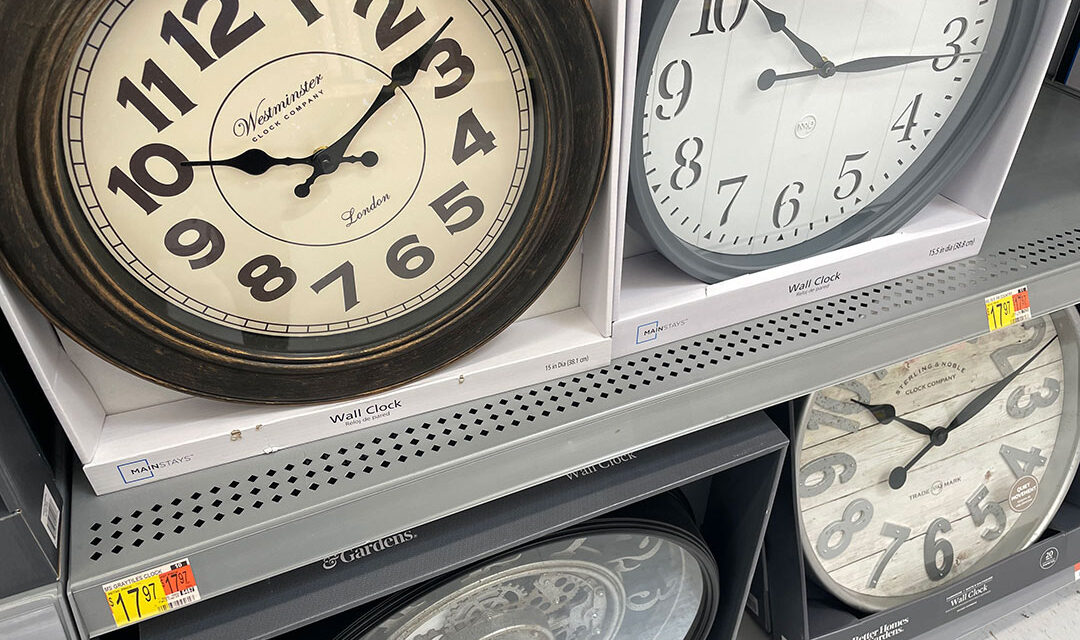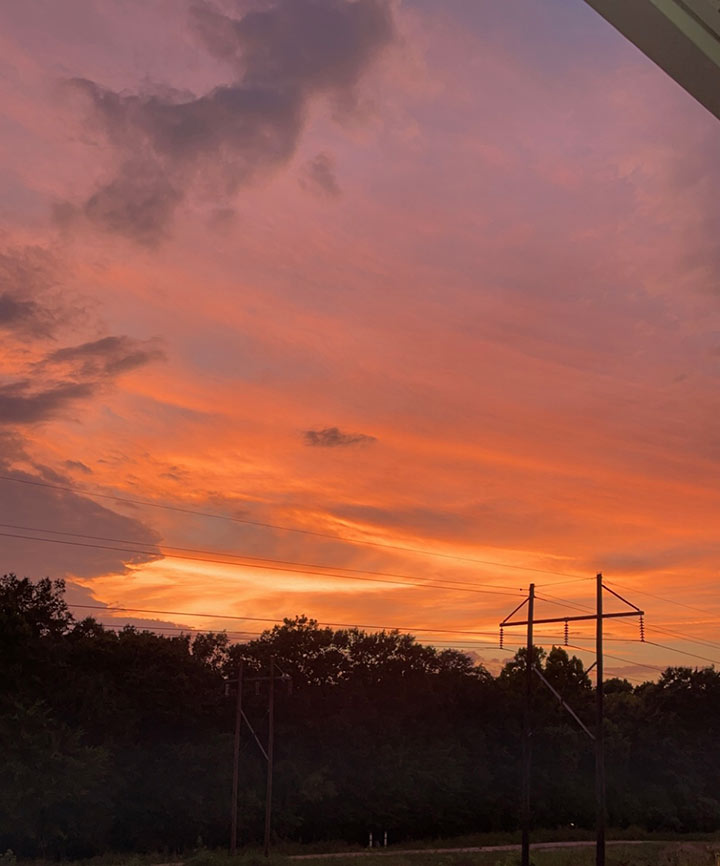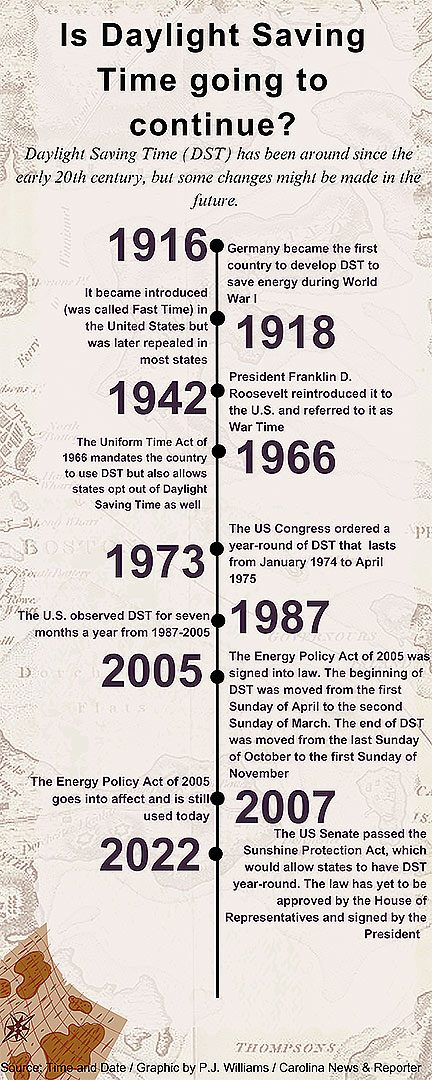Fewer people use manual clocks, as many people now own digital alarms and watches. (Photo by P.J. Williams)
Daylight Saving Time has arrived again, and most people are glad to have the extra daylight.
Daylight Saving Time (DST) is the practice of setting the clocks forward one hour during the spring season, then back one hour during the fall season.
Those who spend the majority of their time outside such as construction workers and skateboarders say they prefer the extra daylight that the time change provides at the end of spring and summer days. But the practice has its detractors.
The sudden shift in time can be difficult on the body, with some people actually suffering emotionally from lack of adequate exposure to sunlight.
The upside
“You get more time at the (skate) park. You get more time to practice on your craft, and you get more time to just be outside more,” said University of South Carolina freshman Bowen Bryant, who was skateboarding recently at Owens Fields Skate Park. “If it was dark, we couldn’t be out here doing this.”
DST extends the hours of daylight in a day, which is one of the main benefits that people appreciate. More daylight means people have more time to shop, work outdoor shifts or take part in outdoor activities such as walking.
Carlwell Culp, a retired contractor, explained that Daylight Saving Time is convenient for those who have early work shifts and those who have late shifts.
“The truth of the matter is you got the same time in the day, you start earlier or you start later,” he said.
Daylight Saving Time also helps promote safety because it prevents car accidents. Drivers can see more clearly with more sunlight, according to the website Britannica.
The downside
The time change does have its downside. Even though Daylight Saving Time can be an advantage to many people, some find the change to their schedule dramatic and difficult to manage.
“I don’t necessarily find Daylight Saving beneficial, ” said Paris Pendarvis, flight attendant at Alaska Airlines. “It messes up my sleep cycle and I lack motivation which causes me to be sluggish at work.”
The change can cause a decrease in productivity because of the change it causes in an individual’s sleep hygiene, according to the bedding retailer Puffy.
This can cause a decrease in people’s productivity, including students and employees because of the late sunrise.
Experts say Seasonal Affective Disorder (SAD) is another downside. The disorder typically occurs in states that have less sunlight during certain times of the year.
“SAD’s a disorder that’s really in the Northern states,” said Jean Davis, University of South Carolina doctoral program director and professor in the College of Nursing Department. “It’s in the Northern states a lot because of the darkness and partially in the winter time when they don’t get as much sunlight.”
Parent Nora Elkin of Columbia said the change disrupts the sleep pattern because the body must quickly adjust from waking up in sunlight to waking in darkness.
“You naturally acclimate yourself to the light every day, and so when you have Daylight Saving Time, it messes up your whole biorhythm, ” Elkin said.
Michael Wirth, assistant professor in USC’s College of Nursing Department, explained why the change is difficult for some people.
“All kinds of hormones start moving,” he said. “Your digestion starts moving. Your immune system starts moving. All this stuff starts happening. When you wake up and you don’t get that morning sunlight, those things are delayed.”
Wirth said the structure of the day from November to March is healthier than the current structure.
“It’s much better for human physiology in terms of what we’re living in right now,” he said.
The history behind it
Daylight Saving Time was invented by entomologist George Hudson back in 1895.
He wanted to have more sunlight in the summer so he could hunt for bugs longer in the day.
The U.S. Congress also has been weighing in for years, proposing the Sunshine Protection Act, which would make Daylight Saving Time, with its dark mornings, permanent year round.
Over the objections of many in the medical community, the act was passed by the Senate in 2022. But the House of Representatives and the President have yet to approve it.
Daylight Saving Time ends on Nov. 5 at 2 a.m. This will turn clocks back to standard time, when it gets darker earlier rather than later.
Unless the House weighs in and agrees with the Senate.
The skateboard park at Owens Field Park is open every day from 6 a.m. to 9 p.m., regardless of the time of year. (Photo by P.J. Williams)
Sunset in the Columbia area (Photo by P.J. Williams)
Michael Wirth explains how the time change can affect some people. (Photo courtesy of the University of South Carolina)






